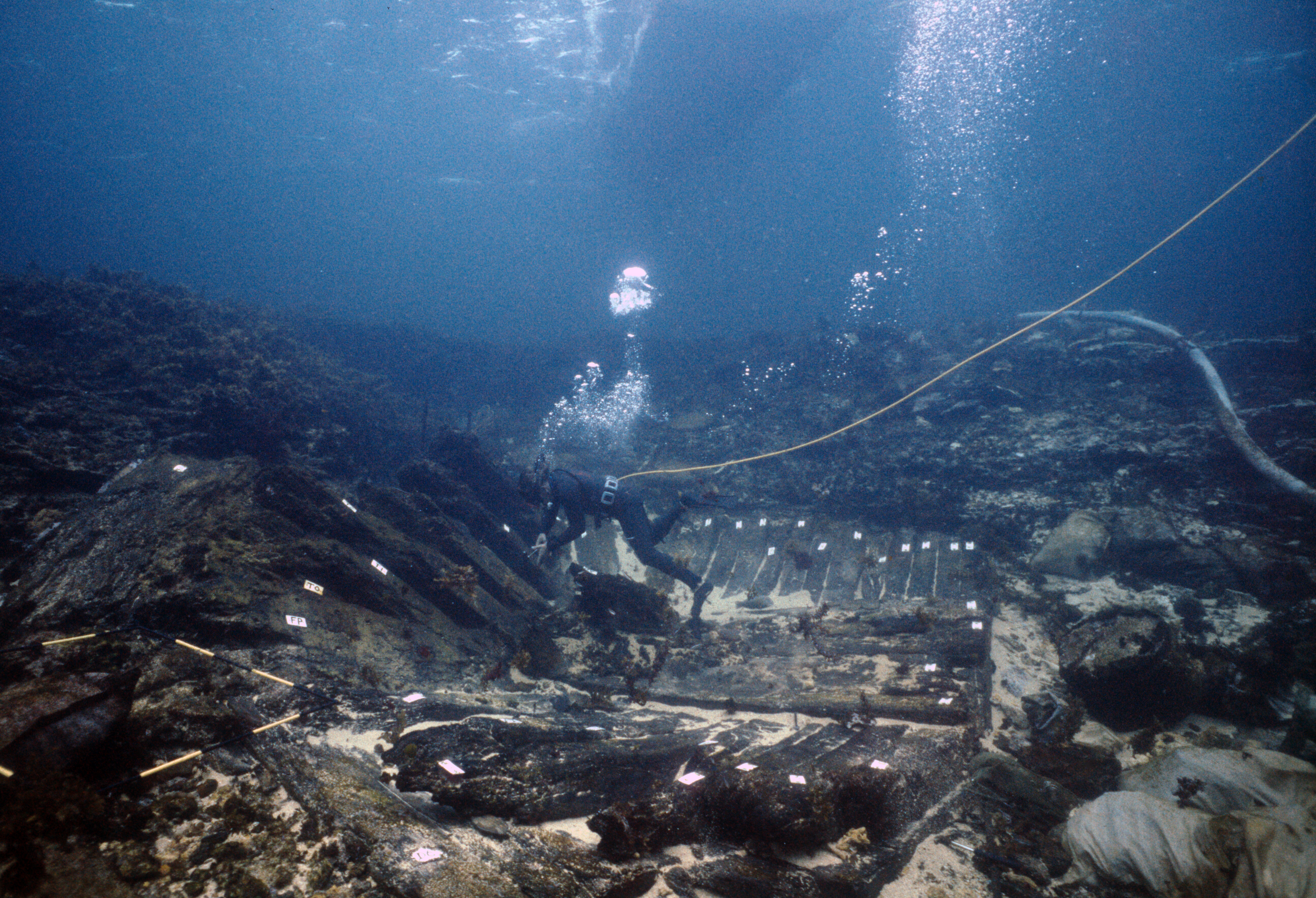Batavia
A brief history of the loss and discovery of the VOC ship Batavia
On the morning of the fourth of June 1629, the VOC retourschip Batavia was wrecked on the Houtman Abrolhos, off the coast of Western Australia. The shipwreck was a prelude to an extraordinary tragedy. The commander, Francisco Pelsaert, all the senior officers, some crew and passengers, (48 in all), deserted 268 people on the ship and on two waterless islands, whilst they ostensibly went in search of water. Abandoning this fruitless search on the mainland coast, they then made their way to Batavia (modern Jacarta), to obtain help; taking, in all, 33 days to get there. On arrival, the high boatswain was executed on Pelsaert’s indictment, for outrageous behaviour before the loss of the ship. The skipper, Adrien Jacobsz, was arrested, again on Pelsaert’s word, for negligence. Governor General Coen dispatched Pelsaert seven days later in the jacht Sardam to effect a rescue of the survivors. With extraordinary bad luck, it took 63 days to find the wreck site, almost double the time it took the ship’s boat to get to Batavia. On arrival at the wreck site, Pelsaert discovered that mutiny and a terrible massacre had taken place. Lead by the undermerchant, Jeronimus Cornelisz, a small group of mutineers had massacred 125 men, women and children. Pelsaert, after arresting the ringleaders, set up a court on the islands where the mutineers were tried and the guilty executed. Whilst the lengthy trials were underway, Pelsaert diligently set about recovering the chests of specie and other valuable items from the wreck, using divers from Gujarat.
When the Sardam finally returned to Batavia, some of the other lesser offenders, who had been flogged, keelhauled and dropped from the yardarm as punishment on the voyage home, were executed. In the end, after it was all over, out of 316 people aboard the Batavia, only 116 survived.
For the VOCit was not such a serious financial disaster as one might imagine; out of the cargo valued at fl. 259,888.11.4 between fl. 40,000 and fl. 45,000 was lost. However, it had been a bad year for the Company, the loss of this new retourschip made it the third loss that year. Of the 1628 fleet, the ‘s Gravenhage was disabled just after leaving the Netherlands and was forced to unload for repairs and a major refit. The Wapen van Enckhuisen blew up off Sierra Lione with only 57 survivors. These were picked up by the Leiden, which itself lost over 170 on the outward voyage. The Batavia was thus soon passed into obscurity. Tasman was instructed in 1644 to locate the wreck site and recover the bronze cannon, however, he did not reach the Abrolhos.
In 1647, an account of the disaster was published by Jan Jansz, entitled Ongeluckige Voyagie van’t Schip Batavia. This ran into a number of reprints, and a number of pirated editions. Even in the 18th century, the Batavia was not completely forgotten: van Dam in 1701 (Staple, 1927), recounts the disaster, as did Valentijn in 1724–26. There was even an English account of the loss, however, the author got confused and put the wreck in the Brazilian Abrolhos.
In 1840, Commander J. Wickham and Lieutenant Lort Stokes visited the Abrolhos in H.M.S. Beagle, as part of an early survey of the Western Australian coast. During the survey, they identified, correctly, the site of the loss of the VOC ship Zeewijk which was wrecked in the Southern Abrolhos in 1727. However, they erroneously identified the very southern end of the Abrolhos, as the site where the Batavia was lost. This was interesting because they obviously carried documents relating to the loss of the Batavia, but these were almost certainly the Ongeluckige Voyagie van’t Schip Batavia or a translation of this and makes no reference to the wallabis that were noted in Pelsaert’s original journal. Wickham and Stokes proceeded north and visited and named the Wallabi Group where they shot a large number at Slaughter point, not far from where the mutineers and the soldiers from the Batavia fought a battle, thus proving they did not have Pelsaert’s original journal.
In the early 1960s, Western Australian historian Henrietta Drake-Brockman (Drake Brockman, 1966) suggested, after studying a translation of Pelsaert’s original journal, that the wreck site lay further to the north, in the Wallabi Group. In 1963, the wreck site was discovered, on Morning Reef, in the Wallabi Group.
Since the discovery of the wreck site, a number of expeditions have been made to the Batavia. In 1963, the first major expedition recovered three bronze and one composite cannon, two astrolabes, some coins and ceramic material. In 1964, the State Government enacted legislation to protect this and other historic wrecks on the coast. This legislation was amended twice, its final form being the Maritime Archaeology Act, 1973. In 1972, the Australian Netherlands Agreement on Old Dutch Wrecks was signed. In this agreement, the Netherlands Government who, as successors to the VOC, are the owners of the VOC wrecks on the Australian coast, transferred their rights to the Australian Government. The Western Australian Museum was recognized in the Acts, as the body responsible for the archaeological excavation and study of these sites.

References
|
Drake-Brockman, H., 1966, Voyage to disaster, the life of Francisco Pelsaert. Angus and Robertson, Australia. Staple, F.W., 1927, Pieter van Dam’s Beschrijvinge van de Oostindische Compagnie 1639-1701. Rijks Geschiedkundige Publicatiën No. 63, Martinus Nijhof, ‘s-Gravenhage. Valentijn, F., 1724, Oud en Nieuw Oost-Indiën… Joannes van Braam and Gerard Onder de Linden, Dordrecht and Amsterdam. |